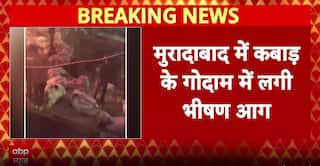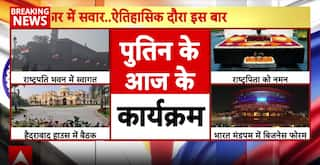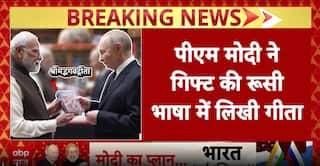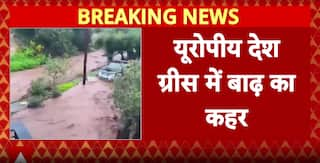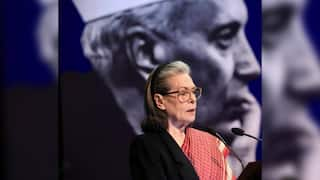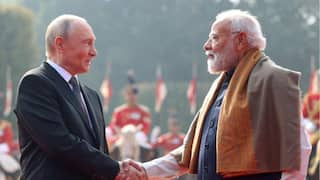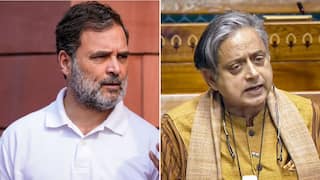India Should Employ A 'Sticks And Carrots' Strategy To Tackle The Pakistan Challenge: Dhruva Jaishankar In New Book
In his book Vishwa Shastra, Dhruva Jaishankar offers an in-depth exploration of India's global influence, from ancient history to modern time, and efforts to build a stronger future. Here's an excerpt
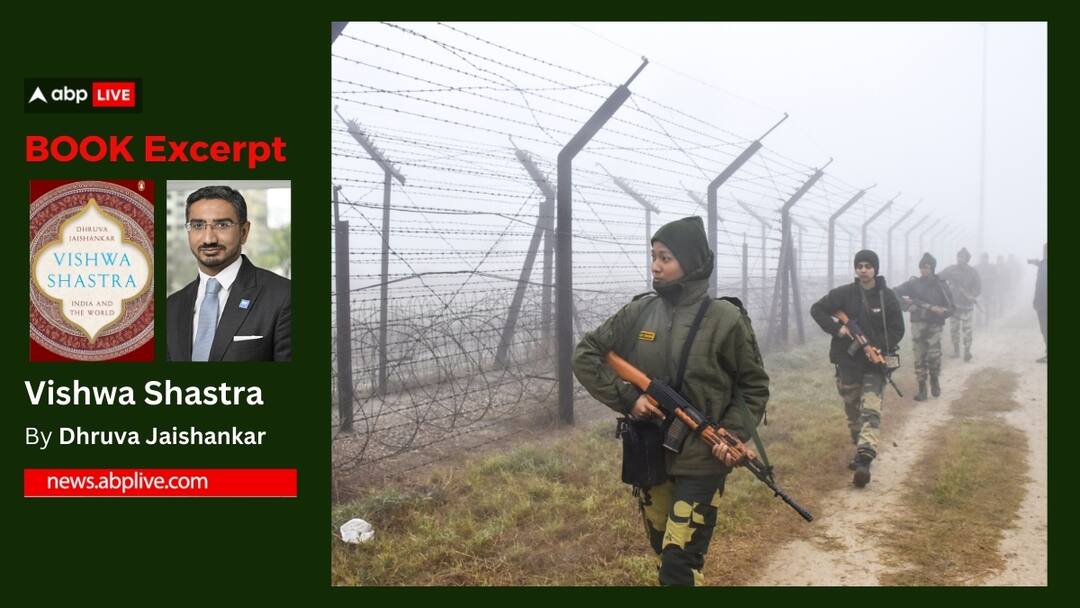
The origins of India’s problems with Pakistan are long and complex. Differences over territory and identity stemming from Partition remained, but areas of convergence and even cooperation could be found between 1948 and the early 1960s. Such cooperation extended to the division of financial and water resources, the peaceful resolution of some boundary differences, relatively normal diplomatic and cultural relations, and even discussion concerning defence cooperation against China.
At the same time, Pakistan’s employment of non-state actors has a long history. It began with the use of tribal lashkars to invade Jammu and Kashmir in 1947. In the 1960s, Brigadier A.A.K. Niazi (who would later achieve notoriety for surrendering at Dhaka in 1971) wrote of ‘battlefields of the future’ requiring infiltration to cause maximum disorder among enemy forces, part of the Pakistani military establishment’s long tradition of thinking systematically about asymmetric and covert warfare. The use of non-state militias continued: in addition to Operation Gibraltar in 1965, Pakistan employed state-supported Islamist proxies to suppress pro-Independence Bangladeshi forces in 1971. The use by Pakistan of non-state actors in Afghanistan similarly pre-dates the Soviet invasion of 1979. But after that period, Pakistan’s material and political support for terrorists targeting India—including Khalistani and Kashmiri separatists and members of criminal syndicates— increased dramatically.
In 1989, ISI officers informed Pakistan’s new Prime Minister Benazir Bhutto that they would use covert jihad in Kashmir, as they had done to considerable success against Soviet forces in Afghanistan. The ISI’s S-Wing—in charge of covert paramilitary operations—organized training camps for militants, where they were armed with Chinese-made weapons and often trained side-by-side with Arabs. After arming and training these and other militants, the ISI helped to infiltrate them into India across the Line of Control, including under covering fire provided by the Pakistan Army. Among the groups supported by the Pakistan Army and ISI over the years are Lashkar-e-Taiba (LeT), Jaish-e-Mohammed (JeM), Hizbul Mujahideen, and the Haqqani Network. While many of these groups have been provided financing, arms, ammunition, other equipment (such as radio sets) and training by the Pakistani state security apparatus, they have also benefited from an enabling environment—a safe space—to organise, recruit, arm, train, and fundraise.
The 1980s added a further element to Pakistan’s asymmetric and sub-conventional warfare with India: a nuclear deterrent. From the 1970s, Pakistan benefited from Chinese bomb designs and fissile material, as well as A.Q. Khan’s efforts, and had a working nuclear weapon capability by the mid-1980s. The prospect of a nuclear deterrent emboldened Pakistan’s support for Kashmiri insurgents beginning in the late 1980s, for D-Company in the early 1990s, for an incursion in Kargil in 1999, for terrorists targeting major Indian urban centres in the 2000s, and most recently for attackers of Indian military facilities in Jammu and Kashmir and Punjab. As former Pakistani Ambassador Husain Haqqani has written, ‘The possession of nuclear weapons . . . encouraged impunity in the ISI’s clandestine operations in Afghanistan and Kashmir.’ Pakistan slowly increased its capacity to produce weapon- grade fissile material. It also worked to successfully develop plutonium-based weapons capable of miniaturization and invested in tactical ballistic missiles for use on the battlefield.
By the mid-2000s, US intelligence estimated that the ISI ran 128 training camps and facilities in Pakistan, with about 1,00,000 armed militants under their management and influence. In November 2008, ten Pakistani men—who had been trained for three months at Lashkar camps in Karachi and Thatta in Sindh—killed 166 innocent civilians in Mumbai in perhaps the most dramatic televised terrorist attack since 9/11. In preparation for these attacks, ISI paid a Pakistani American, Daood Gilani (operating under the name David Headley), to survey targets in Mumbai. The operation’s planners coordinated the attack via phone from Karachi.
In addition to India, Afghanistan has been another target of Pakistan-sponsored terrorist groups. During the 1990s, Pakistani military advisors were involved in training Taliban fighters, and Pakistani nationals fought in the Taliban (in the late 1990s, Pakistanis were estimated to have constituted about 20–40 per cent of Taliban forces). In July 2008, a Pakistani named Hamza Shahkoor—trained by Lashkar-e-Taiba and assisted by the Haqqani Network—detonated a car bomb in front of the Indian Embassy in Kabul, killing an Indian diplomat among other victims. In 2010, Mullah Abdul Ghani Baradar, a deputy to Afghan Taliban leader Mullah Omar, was arrested in Karachi at the instruction of the United States, after which the ISI refused to let him be interviewed alone by US intelligence officers (presumably because he would have revealed too much about their working relationship).
Pakistani military and intelligence leaders have employed a range of responses to charges of supporting terrorism. One has been to flatly deny any links, as they did after the 2008 Indian Embassy bombing in Kabul and the 26/11 attacks in Mumbai. Terrorism against targets in Afghanistan were sometimes justified by the notion of ‘strategic depth’, a somewhat preposterous idea that Pakistani forces can fall back into Afghanistan in the event of an Indian invasion from the east. Pakistani military and civilian leaders also complained about Indian encirclement and long exaggerated India’s security presence in Afghanistan (for example, the media arm of Pakistan’s military propagated the notion that India was running intelligence operations out of dozens of consulates in Afghanistan, when in fact India never had more than four). All of this has served to justify Pakistan’s support for terrorist groups.
India has attempted to address this compound challenge from Pakistan through both negative and positive leverage: ‘sticks’ and ‘carrots’. The sticks have included a military mobilization in 2001–02 after the attack on the Indian Parliament, known as Operation Parakram. More recently, in response to major terrorist attacks at Uri and Pulwama, India responded with ground based ‘surgical strikes’ across the Line of Control and air strikes on Balakot. The intention of these actions was to reduce predictability in India’s responses. While continuing efforts will have to be made to increase India’s punitive options against Pakistan—such as diplomatic efforts to isolate and condemn Pakistan and link economic assistance and benefits to its support for terrorism, such as through the Financial Action Task Force—it will be necessary to continuously develop military contingency plans.
Meanwhile, ‘carrots’ have consistently been rejected by Pakistan, such as Indian efforts to normalize trade relations and conclude a transit trade agreement with Afghanistan. Even efforts at improving diplomatic relations—from the Lahore summit of 1999 to President Asif Ali Zardari’s outreach initiatives of 2008 and Prime Minister Narendra Modi’s visit to Lahore in 2015—have been stymied by the Pakistani military establishment, which engineered or approved the Kargil incursion in 1999, the Mumbai terrorist attacks in 2008 and the Pathankot attack of 2015.
Continued Indian engagement with Pakistan, even if at a low level, is sometimes necessary to maintain direct channels of communication and prevent third-party mediation, which India believes could tilt outcomes in Pakistan’s favour.
This excerpt is part of the book, 'Vishwa Shastra', written by Dhruva Jaishankar, and has been published with permission from Penguin India.
[Disclaimer: The opinions, beliefs, and views expressed by the various authors and forum participants on this website are personal and do not reflect the opinions, beliefs, and views of ABP Network Pvt. Ltd.]










